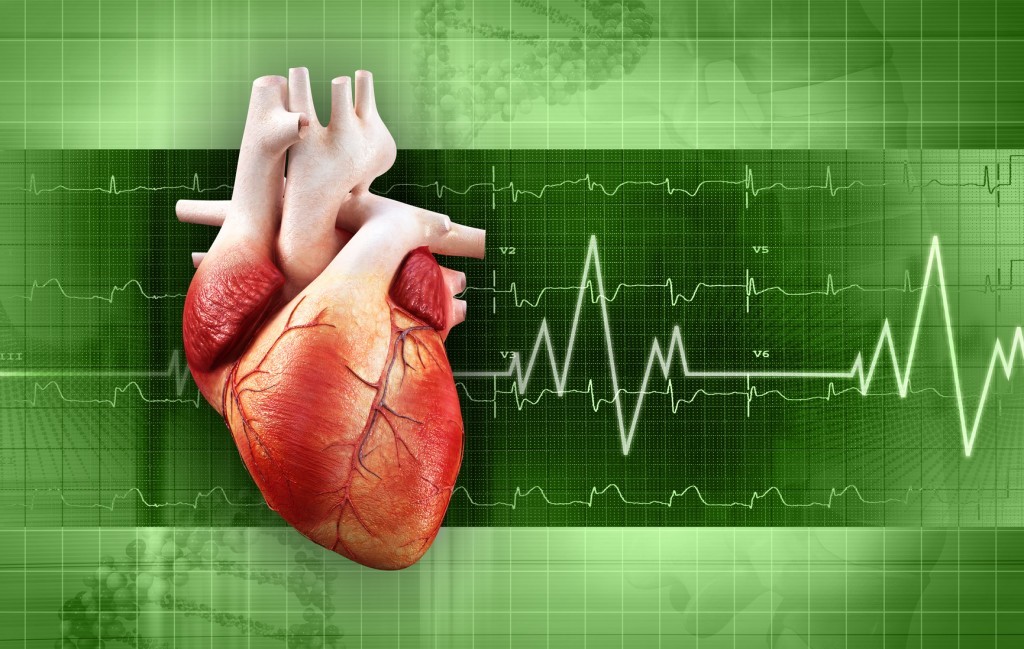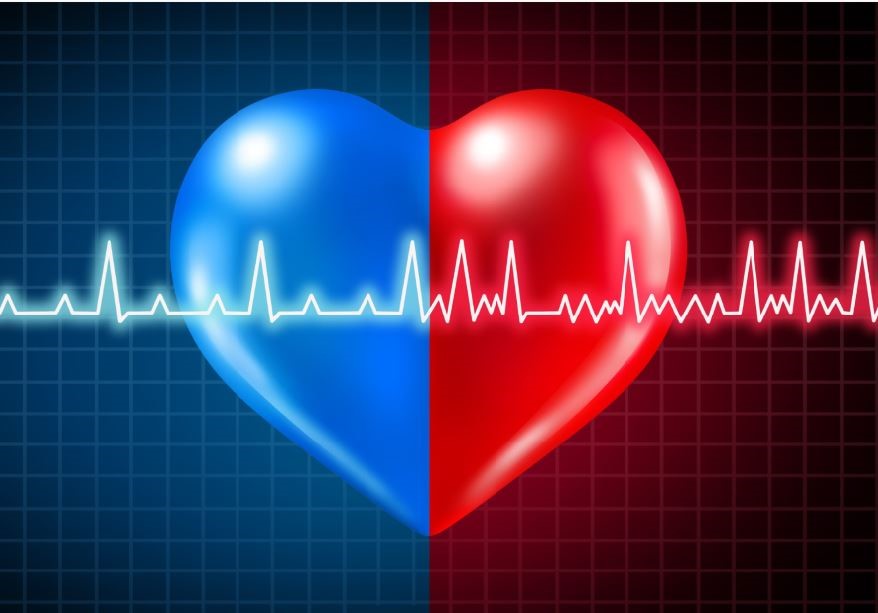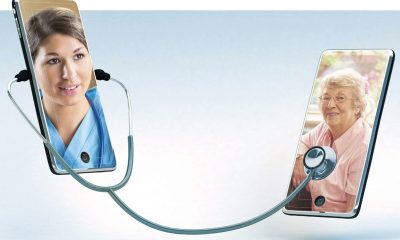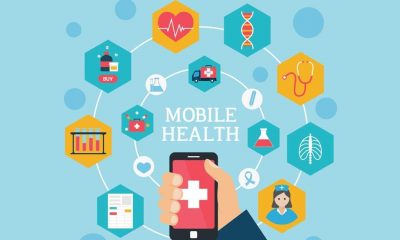health
New Advances in Cardiovascular Health Monitoring

Cardiovascular health monitoring has witnessed significant advancements in recent years, driven by technological innovations and a deeper understanding of the heart and its associated systems. These advancements are not only enhancing the quality of patient care but also providing critical insights that could potentially prevent life-threatening conditions. This article delves into the latest trends, technologies, and methodologies shaping the future of cardiovascular health monitoring.
The Importance of Cardiovascular Health Monitoring
Cardiovascular diseases (CVDs) remain the leading cause of mortality worldwide, accounting for nearly 18 million deaths annually, according to the World Health Organization (WHO). The early detection and continuous monitoring of cardiovascular health are paramount in managing and mitigating the risks associated with these diseases. Traditional methods of cardiovascular health monitoring, such as electrocardiograms (ECGs) and blood pressure measurements, have been instrumental. However, the integration of new technologies is revolutionizing this field.
Wearable Technology
One of the most significant advancements in cardiovascular health monitoring is the proliferation of wearable technology. Devices such as smartwatches and fitness trackers have become ubiquitous, offering real-time data on heart rate, physical activity, and even sleep patterns. Companies like Apple, Fitbit, and Garmin have developed sophisticated algorithms that can detect irregular heart rhythms, such as atrial fibrillation (AFib), a common but potentially serious condition.
Continuous Monitoring
Wearable devices enable continuous cardiovascular monitoring, providing a more comprehensive picture of an individual’s heart health. This continuous data stream allows for the detection of anomalies that might be missed during sporadic check-ups. For instance, the Apple Watch has been FDA-approved for its ECG feature, which can alert users to potential AFib, prompting them to seek medical advice before a condition escalates.
Integration with Health Platforms
The integration of wearable technology with health platforms is another noteworthy development. Platforms like Apple Health and Google Fit aggregate data from various sources, including wearables, to provide a holistic view of a user’s health. This integration facilitates better communication between patients and healthcare providers, enabling more personalized and timely interventions.

Picture by: Yandex.com
Artificial Intelligence and Machine Learning
Artificial Intelligence (AI) and Machine Learning (ML) are playing transformative roles in cardiovascular health monitoring. These technologies are being leveraged to analyze vast amounts of data, identify patterns, and predict potential health issues before they manifest.
Predictive Analytics
AI-driven predictive analytics can assess an individual’s risk of developing cardiovascular conditions based on historical data and lifestyle factors. For example, IBM Watson Health uses AI to analyze medical records, genetic information, and lifestyle data to predict cardiovascular risks. This predictive capability allows for proactive measures, such as lifestyle modifications and preventive medications, to be implemented.
Diagnostic Accuracy
AI algorithms are also enhancing the diagnostic accuracy of cardiovascular conditions. Machine learning models can analyze ECGs and other diagnostic tests with a high degree of precision, often surpassing human capabilities. This increased accuracy can lead to earlier diagnosis and more effective treatment plans.
Remote Monitoring and Telehealth
The COVID-19 pandemic has accelerated the adoption of remote monitoring and telehealth services, which have become integral to cardiovascular health monitoring.
Remote Patient Monitoring (RPM)
Remote Patient Monitoring (RPM) involves the use of digital technologies to collect health data from patients in one location and electronically transmit it to healthcare providers for assessment and recommendations. Devices such as remote ECG monitors, blood pressure cuffs, and pulse oximeters enable continuous monitoring of cardiovascular health from the comfort of a patient’s home.
Telehealth Consultations
Telehealth consultations have become increasingly common, allowing patients to discuss their cardiovascular health with healthcare providers without the need for in-person visits. This is particularly beneficial for individuals with mobility issues or those living in remote areas. Telehealth platforms often integrate with RPM devices, providing a seamless experience for both patients and providers.
Genomics and Personalized Medicine
Genomics and personalized medicine are opening new frontiers in cardiovascular health monitoring. By analyzing an individual’s genetic makeup, healthcare providers can gain insights into their predisposition to certain cardiovascular conditions.
Genetic Testing
Genetic testing can identify mutations associated with hereditary cardiovascular diseases, such as hypertrophic cardiomyopathy and familial hypercholesterolemia. Companies like 23andMe and AncestryHealth offer genetic testing kits that can provide valuable information about an individual’s cardiovascular health risks.
Personalized Treatment Plans
Personalized treatment plans based on genetic information are becoming more prevalent. For example, pharmacogenomics, which studies how genes affect a person’s response to drugs, can guide the selection of medications that are most likely to be effective for a particular individual, thereby improving treatment outcomes.
Advanced Imaging Techniques
Advancements in imaging techniques are providing more detailed and accurate assessments of cardiovascular health.
Cardiac MRI and CT Scans
Cardiac Magnetic Resonance Imaging (MRI) and Computed Tomography (CT) scans offer high-resolution images of the heart and blood vessels. These imaging modalities can detect structural abnormalities, blockages, and other issues with greater precision than traditional methods.
3D Imaging and Printing
3D imaging and printing technologies are also making strides in cardiovascular health monitoring. 3D models of the heart can be created to plan complex surgeries or to better understand congenital heart defects. This technology is particularly useful in pediatric cardiology, where detailed anatomical models can guide surgical interventions.
Conclusion
The landscape of cardiovascular health monitoring is rapidly evolving, driven by technological innovations and a deeper understanding of cardiovascular diseases. Wearable technology, AI and machine learning, remote monitoring, genomics, and advanced imaging techniques are revolutionizing how we monitor and manage cardiovascular health. These advancements hold the promise of not only improving patient outcomes but also preventing the onset of cardiovascular conditions through early detection and personalized interventions.
As these technologies continue to evolve, the future of cardiovascular health monitoring looks promising, offering new hope in the fight against the world’s leading cause of death. The integration of these advancements into everyday healthcare practices will be crucial in realizing their full potential and ensuring that individuals can lead healthier, longer lives.
health
Download Covid Vaccine Certificate by Aadhaar or Risk Travel Ban

Introduction
Even though most domestic restrictions around COVID-19 have eased in India, the vaccination certificate remains one of the most important health records in 2025. It continues to be essential for international travel, insurance documentation, and even in some workplaces where proof of vaccination is still required.
The government has made the process easier by allowing covid vaccine certificate download by Aadhaar number through official platforms such as CoWIN, DigiLocker, UMANG, and Aarogya Setu. Yet, many people are unaware of the new emphasis being placed on linking certificates with Aadhaar and how failure to do so could affect travel plans or claim settlements under a mediclaim policy.
What Is the New Rule and Why It Matters
While the rule’s details may vary by country or region, the core idea is that travelers should download or link their Covid vaccine certificate to their Aadhaar (a unique identity number used in India). Authorities may require this certificate as proof of vaccination when traveling, and not having it linked correctly could lead to complications or even a travel ban in some cases.
Here’s why the Aadhaar-linked certificate matters:
- It provides a reliable and verifiable identity proof tied to your vaccination record.
- It reduces the risk of fake or fraudulent vaccination certificates.
- It makes it easier for authorities (both in India and abroad) to check the authenticity of your vaccine status.
- It ensures smoother verification when registering on travel health portals or at immigration checks.
In short, the Aadhaar-based certificate is becoming a trusted way for governments and travel agencies to confirm your vaccination status safely and accurately.
Why the Covid vaccine certificate still matters in 2025
- International travel: Many countries require verified proof of vaccination before entry. Without a valid certificate linked to Aadhaar, passengers may be denied boarding.
- Insurance documentation: Health and mediclaim policies increasingly rely on digital health records. A vaccination certificate linked to Aadhaar ensures seamless claim approvals.
- Employment and education: Some organisations and foreign universities still require COVID-19 vaccination proof for compliance.
- Future vaccinations: Booster doses or new vaccines may need prior records for validation, making a digital certificate indispensable.
What information does the certificate carry?
When you complete your covid vaccine certificate download by Aadhaar number, the document contains:
- Name of the individual
- Age and gender
- Aadhaar number (partially masked)
- Reference or beneficiary ID
- Name of vaccine received
- Number of doses taken (including precautionary dose)
- Name of vaccination centre
- A secure QR code for verification
This ensures authenticity and prevents misuse.
Step-by-step guide to download using Aadhaar
1. Through the CoWIN portal
- Visit the official CoWIN website.
- Click on the ‘Download Your Vaccine Certificate’ option.
- Enter your registered mobile number linked with Aadhaar.
- Enter the OTP sent to your phone.
- Select the completed vaccination dose record.
- Click the ‘Certificate’ tab to download your digital copy.
2. Through the Aarogya Setu app
- Install and open the Aarogya Setu app.
- Log in with your mobile number and OTP.
- Navigate to the CoWIN section.
- Enter your beneficiary ID.
- Tap on ‘Get Certificate’ to download.
3. Through the UMANG app
- Download the UMANG app and log in using your mobile number.
- Go to the CoWIN services tab.
- Select ‘Download Vaccination Certificate’.
- Enter your Aadhaar-linked mobile number and OTP.
- Verify beneficiary details and download the certificate.
4. Through the DigiLocker app
- Install DigiLocker and register with your Aadhaar-linked mobile number.
- Search for ‘Covid Vaccine Certificate’ in the document section.
- Enter your beneficiary reference ID.
- Download and save your certificate for future use.
Link between vaccination certificate and mediclaim policy
Many people are unaware that vaccination status can directly affect a mediclaim policy. Here is how:
- Claim approvals: Some insurers may require vaccination proof for claims linked to COVID-19 or related complications.
- Cashless treatment: A certificate linked to Aadhaar makes digital verification faster at network hospitals.
- Premium stability: Maintaining verified health records, including vaccination, can influence underwriting decisions in long-term policies.
Failing to maintain an updated certificate could cause unnecessary delays in settlement or documentation.
The new push for Aadhaar-linked certificates
Government updates now encourage citizens to keep vaccination records linked with Aadhaar to ensure identity verification. This has several benefits:
- Authenticity: Prevents duplicate or fraudulent certificates.
- Convenience: Aadhaar-linked mobile numbers make OTP-based downloads simple.
- Universal use: One record can be used across government, travel, and insurance platforms.
In some cases, failure to show an Aadhaar-linked certificate for travel may result in a ban from boarding international flights.
Why Many Governments Favor Aadhaar‑Linked Certificates
Government and travel authorities often trust Aadhaar‑linked certificates for several reasons:
- Strong Identity Verification: Aadhaar is a widely accepted identification system in India. Linking it to vaccination records makes identity verification easier and more secure.
- Reduced Fraud: A certificate tied to Aadhaar is harder to forge, reducing fake vaccine certificates.
- Streamlined Verification: Immigration and health authorities can verify vaccination status more quickly when validated against a national ID system.
- Textbook Record Keeping: Linking to Aadhaar helps governments keep better digital records and ensures accurate updates for vaccine doses, booster shots, and renewals.
These reasons explain why an Aadhaar-connected certificate is becoming more popular for travel and health verification.
Important Things to Remember Before Traveling
- Always check the latest travel advisory for your destination country about Covid certificate rules.
- Make sure your certificate has your correct name, date of birth, and Aadhaar details.
- Keep a digital and a physical copy of your certificate.
- Verify that your QR code on the certificate scans correctly.
- Be ready to show your certificate along with your passport or national ID.
- Store your certificate safely in trusted apps like DigiLocker or UMANG.
Common mistakes to avoid
- Unlinked mobile numbers: Ensure your Aadhaar and mobile number are linked to receive OTPs.
- Lost reference ID: Save or note down your beneficiary ID to simplify downloads.
- Expired apps: Use updated versions of DigiLocker, UMANG, or Aarogya Setu for smooth access.
- Not saving copies: Keep both digital and printed versions to avoid last-minute issues.
Future relevance of the vaccine certificate
Even if COVID-19 risks appear lower today, the vaccination certificate will remain part of your official health records. Much like birth certificates or medical test reports, it may be required for:
- Enrolling in government health schemes.
- Renewing or upgrading insurance policies.
- Applying for visas or scholarships.
- Accessing institutional healthcare in India or abroad.
Conclusion
The importance of maintaining a verified COVID vaccine certificate has not diminished in 2025. With international travel and health insurance policies increasingly tied to vaccination records, the ability to complete a covid vaccine certificate download by Aadhaar number is essential.
For families, this document not only ensures smoother travel and medical access but also strengthens compliance with a mediclaim policy. By downloading and safely storing both digital and physical copies, individuals protect themselves from unexpected disruptions in healthcare or travel.
In the coming years, health documentation will only become more digital and Aadhaar-linked. Acting today to secure your COVID vaccine certificate is the simplest way to stay future-ready.
health
Senior In Home Care in Royal Oak, MI | Assured Home Nursing

Introduction
As people age, maintaining independence and comfort at home becomes increasingly important. Senior in-home care provides a solution that allows elderly individuals to live safely and comfortably in their own homes while receiving professional support. In Royal Oak, MI, Assured Home Nursing offers compassionate, personalized care that addresses both medical and daily living needs.
Many families face challenges when a loved one requires extra assistance. Balancing work, personal life, and caregiving can be stressful, and not all seniors are ready to move into a care facility. In-home care ensures that seniors get the support they need while staying in familiar surroundings.
Assured Home Nursing in Royal Oak, MI specializes in providing senior care that emphasizes dignity, independence, and quality of life. From companionship to medical support, their services are tailored to meet the unique needs of each individual. This article will explore the benefits, types of care, and why choosing Assured Home Nursing is an excellent decision for families and seniors.
What Is Senior In-Home Care?
Senior in-home care refers to services provided to older adults in the comfort of their own homes. Unlike nursing homes or assisted living facilities, in-home care allows seniors to maintain their routines while receiving assistance with daily tasks.
Services may include:
- Personal care such as bathing, grooming, and dressing
- Medication management and health monitoring
- Meal preparation and nutritional support
- Companionship and social engagement
- Light housekeeping and errands
- Transportation to medical appointments or social activities
The primary goal of in-home care is to enhance a senior’s independence while providing safety, support, and peace of mind to both the individual and their family.
Benefits of Senior In-Home Care
Choosing in-home care for seniors has many advantages, especially when provided by professional agencies like Assured Home Nursing. Some of the key benefits include:
1. Personalized Care
Every senior has unique needs. In-home care plans are tailored to match the specific health requirements, preferences, and lifestyle of each individual. Caregivers work closely with families to create a care plan that ensures comfort and safety.
2. Independence and Familiarity
Remaining at home allows seniors to enjoy a familiar environment, which is important for emotional well-being. In-home care helps them maintain independence while receiving the support they need.
3. Companionship
Loneliness can be a significant issue for older adults. Caregivers provide social interaction, engage in conversations, and participate in hobbies, helping to improve mental health and overall happiness.
4. Health Monitoring
Professional caregivers are trained to monitor vital signs, administer medications, and recognize early signs of health issues. This ensures prompt attention to medical needs and reduces the risk of complications.
5. Family Peace of Mind
Families often worry about the safety and well-being of their elderly loved ones. In-home care offers reassurance that their loved one is receiving attentive and professional care throughout the day.
Types of Senior In-Home Care Services
Assured Home Nursing provides a variety of in-home care services to meet different needs. These include:
1. Personal Care Assistance
Caregivers help seniors with daily tasks like bathing, dressing, toileting, and mobility. This support is essential for seniors who may have physical limitations or chronic conditions.
2. Skilled Nursing Care
Registered nurses can provide medical care, including wound care, medication management, IV therapy, and monitoring chronic illnesses. Skilled nursing is ideal for seniors who require professional medical attention at home.
3. Companionship Services
Caregivers offer friendly interaction, help with social activities, and provide emotional support to seniors who may feel isolated or lonely. Companionship services can significantly enhance quality of life.
4. Respite Care
Family caregivers often need breaks to rest or attend to personal matters. Respite care provides temporary relief by allowing trained caregivers to step in and ensure the senior’s needs are met during that time.
5. Specialized Care
Some seniors may have conditions like Alzheimer’s, dementia, or Parkinson’s disease. Specialized care programs address these conditions with trained caregivers who understand how to provide safe and effective support.
Why Choose Assured Home Nursing in Royal Oak, MI?
Assured Home Nursing stands out as a trusted provider of senior in-home care in Royal Oak, MI, for several reasons:
- Experienced and Compassionate Caregivers: All caregivers undergo thorough training to provide professional, empathetic care. They understand the emotional and physical challenges seniors face and provide support with patience and respect.
- Customized Care Plans: Assured Home Nursing creates personalized care plans tailored to each senior’s needs, preferences, and lifestyle. This ensures that every individual receives the right level of care and attention.
- Reliable and Flexible Services: Whether care is needed a few hours a day or around the clock, Assured Home Nursing offers flexible scheduling. Families can adjust services as needs change over time.
- Commitment to Safety: The agency prioritizes safety, from trained caregivers to adherence to health guidelines and best practices. This gives families confidence that their loved one is in good hands.
- Comprehensive Support: Assured Home Nursing provides a full spectrum of services, from personal care to skilled medical support, making it a one-stop solution for seniors and families in Royal Oak.
How to Get Started with Senior In-Home Care
Getting started with in-home care at Assured Home Nursing is simple:
- Initial Consultation: Families discuss the senior’s needs with a care coordinator.
- Care Plan Development: A customized plan is created to meet medical, personal, and emotional needs.
- Caregiver Assignment: Experienced caregivers are assigned based on the senior’s requirements and preferences.
- Ongoing Support: Regular updates and adjustments are made to ensure the senior receives optimal care.
This approach ensures a smooth transition into in-home care and builds trust between caregivers, seniors, and families.
Conclusion
Senior in-home care in Royal Oak, MI provides an ideal solution for families seeking professional support while allowing their loved ones to remain at home. Assured Home Nursing combines compassionate caregiving, medical expertise, and personalized care plans to ensure seniors live safely, comfortably, and with dignity.
From personal care to companionship, skilled nursing, and specialized support, in-home care meets a wide range of needs. By choosing Assured Home Nursing, families can gain peace of mind knowing their loved ones are in capable and caring hands. For seniors, it means enjoying independence, safety, and a higher quality of life in the comfort of their own home.
health
Abbott Cell Dyn Emerald 22 vs Emerald: Key Differences Explained

Introduction
Accurate and fast blood testing is very important in medical labs, and the choice of analyzer can greatly affect lab performance. Abbott is well known for its advanced diagnostic technology, and its Cell Dyn series is trusted for being reliable and precise. Two popular models in this series are the Abbott Cell Dyn Emerald 22 and the Cell Dyn Emerald. These are small, automatic hematology analyzers designed to fit different lab needs. While both provide high-quality and accurate results, they differ in their technology, features, and performance, making each one better suited for certain types of labs.
Knowing the differences between the Cell Dyn Emerald 22 and the Cell Dyn Emerald helps labs choose the right model based on their testing volume, workflow, and budget. Both machines give consistent results, but the newer version offers better efficiency and control during operation.
Overview of the Abbott Cell Dyn Emerald Series
You should know that the Abbott Cell Dyn Emerald series was developed to provide laboratories with dependable hematology analysis in a compact form. These analyzers are designed for small to medium-sized laboratories that need reliable complete blood count (CBC) results without the complexity or cost of larger systems.
It is important to understand that both the Abbott Cell Dyn Emerald 22 and the original Emerald model deliver high-quality results, but the 22 version incorporates advanced automation and updated software to improve workflow efficiency and analytical accuracy.
Core Similarities Between the Two Models
Both analyzers have many important features in common. They are built to handle regular blood tests, measuring things like red and white blood cells, platelets, hemoglobin, and hematocrit. Both models use impedance and optical technology to provide accurate cell counts and clear results.
You can count on either system to deliver fast and consistent results, helping doctors make better medical decisions. With easy-to-use software, a compact design, and automatic sampling, these analyzers allow labs to run reliable tests even when working with limited space or resources.
Key Differences in Design and Throughput
The Abbott Cell Dyn Emerald 22 is designed to work faster and perform better than the original Emerald model. While the standard Emerald can process about 60 samples per hour, the Emerald 22 can handle up to 80 samples per hour, helping labs manage a higher workload more efficiently.
The Emerald 22 also has an improved sampling system with both open and closed tube options, making it safer and more flexible to use. This feature is especially helpful for labs that focus on operator safety and want to reduce the risk of exposure to biohazards.
Workflow and User Interface Improvements
Efficient workflow is very important for keeping a laboratory productive, and the Abbott Cell Dyn Emerald 22 includes several features that make daily work easier. Its improved user interface is simple to use and gives quick access to test results, calibration settings, and maintenance tasks.
The updated software helps new users learn the system faster and shortens the time needed to complete tests. With its modern touchscreen and easy navigation menus, the Emerald 22 offers a more user-friendly experience—especially useful for labs that use several instruments.
Data Management and Connectivity
The Abbott Cell Dyn Emerald 22 also offers better data management with improved connectivity features. It can easily connect to laboratory information systems (LIS), allowing quick and accurate transfer of test results.
While the original Emerald has basic data storage and transfer options, the Emerald 22 includes more memory, easier data access, and stronger security for managing results. This makes it a great choice for labs that focus on traceability and meeting quality and compliance standards.
Reagent Efficiency and Cost-Effectiveness
Both analyzers are designed to use reagents efficiently, helping reduce waste and operating costs. However, the Abbott Cell Dyn Emerald 22 takes this a step further with improved fluidics and reagent monitoring systems that make reagent use even more efficient.
These upgrades not only save on reagent costs but also increase instrument uptime by reducing how often maintenance is needed. For labs that want to maintain accuracy while keeping costs low, this is a major benefit.
Quality Control and Calibration Systems
You should know that both analyzers incorporate advanced quality control features to ensure accurate and reliable results. However, the Abbott Cell Dyn Emerald 22 integrates automated quality checks that operate continuously during testing, providing an additional layer of confidence.
It is important to understand that this automation reduces the potential for manual errors and ensures consistent calibration, allowing laboratories to maintain compliance with international quality standards. Learn more by visiting this link.
Choosing Between the Two Analyzers
You should know that the choice between the Abbott Cell Dyn Emerald 22 and the Cell Dyn Emerald depends on your laboratory’s needs. The Emerald remains a dependable solution for smaller laboratories that require accurate hematology testing without advanced automation.
It is important to understand that the Emerald 22 offers improved performance, safety, and efficiency, making it better suited for laboratories with growing workloads and a focus on data management.
Conclusion
You should know that both the Abbott Cell Dyn Emerald and the Abbott Cell Dyn Emerald 22 are reliable hematology analyzers built on Abbott’s proven diagnostic technology. However, the 22 version introduces significant advancements in automation, throughput, and user interface design.
It is important to understand that laboratories seeking higher productivity, enhanced safety, and seamless connectivity will find the Abbott Cell Dyn Emerald 22 a valuable upgrade. Meanwhile, smaller facilities that prioritize affordability and simplicity can continue to rely on the original Emerald for consistent, high-quality results.
You can confidently conclude that while both analyzers deliver accurate hematology performance, the Abbott Cell Dyn Emerald 22 represents a new generation of efficiency, precision, and innovation in modern laboratory testing.
-
Business2 years ago
Cybersecurity Consulting Company SequelNet Provides Critical IT Support Services to Medical Billing Firm, Medical Optimum
-
Business2 years ago
Team Communication Software Transforms Operations at Finance Innovate
-
Business2 years ago
Project Management Tool Transforms Long Island Business
-
Business2 years ago
How Alleviate Poverty Utilized IPPBX’s All-in-One Solution to Transform Lives in New York City
-
health2 years ago
Breast Cancer: The Imperative Role of Mammograms in Screening and Early Detection
-
Sports2 years ago
Unstoppable Collaboration: D.C.’s Citi Open and Silicon Valley Classic Unite to Propel Women’s Tennis to New Heights
-
Art /Entertainment3 years ago
Embracing Renewal: Sizdabedar Celebrations Unite Iranians in New York’s Eisenhower Park
-
Finance3 years ago
The Benefits of Starting a Side Hustle for Financial Freedom










































